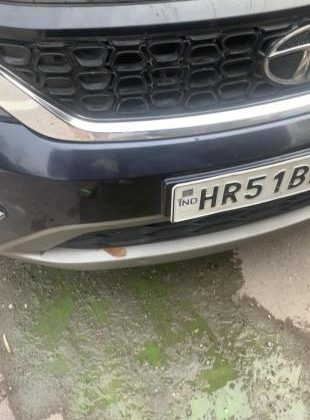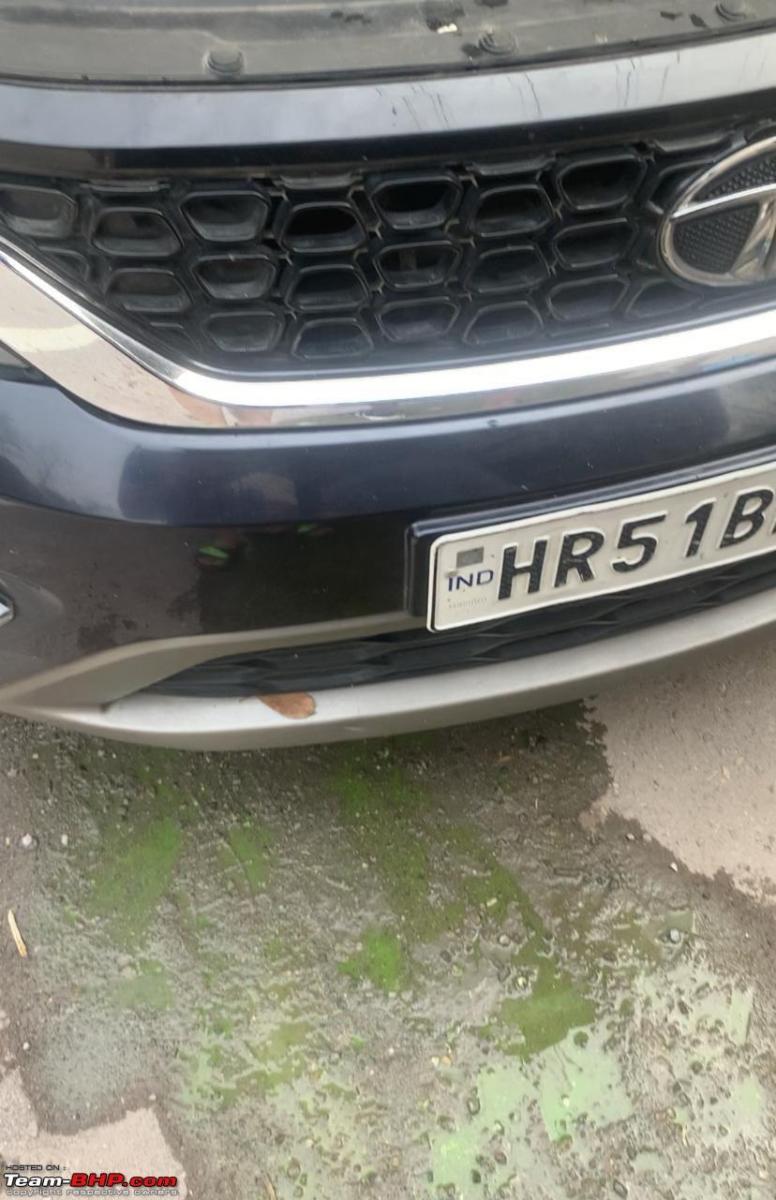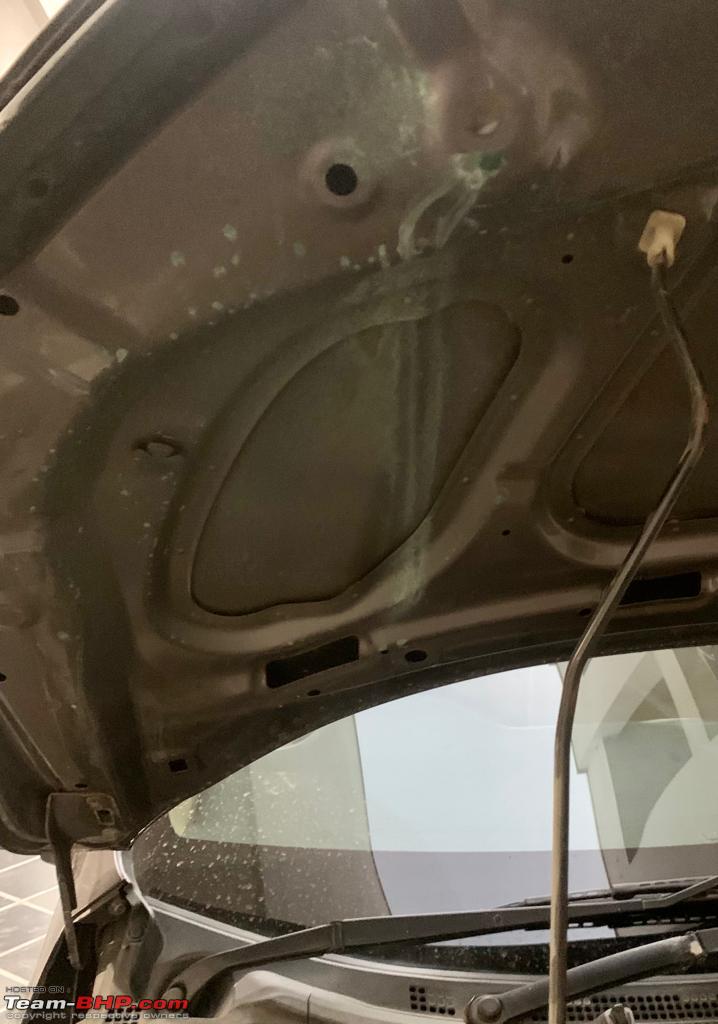The car has shown no sign or indication of overheating whatsoever. It has felt, smelt and driven just like at any other time.
BHPian Shreyans_Jain recently shared this with other enthusiasts.
There was once a time when going on a road trip meant topping up fluids the morning of the drive and always carrying a spare bottle of water for the trip, perhaps even a fan belt. It was standard practice to stop to let the engine cool down after a few hours on the road, top up the water and then drive on. Fortunately, modern cars have become a lot more reliable and tolerant to heat. Cooling systems have evolved to the point where you can be stuck in bumper-to-bumper traffic in 50-degree summer heat and your car’s performance or its AC’s cooling will not skip a beat. Most modern cars have in fact done away with the temperature gauge. All we get is a little warning light that is supposed to light up the off chance something goes wrong. But what happens when things actually do go wrong?
2022 has been the hottest summer on record. This year I have had two incidents of cooling systems failing, and the observations have been startling.
Tata Hexa, March 2022
This has been touched upon in my thread. We were parked in Devprayag having lunch when I detected a little whiff of the smell of coolant from the car. I checked but nothing was apparently amiss. There were many tempos, taxis and buses in the vicinity, so I attributed the smell to any one of them. We loaded up and drove down towards Kaudiyala for our rafting session. At the meeting point, the rafting person who was waiting for us was the first to notice green liquid dripping from the car. Within moments, we had the automotive equivalent of a crime scene.
While the rest of the family went rafting, I tried to figure out a fix. Filled in jugs of water from a nearby Dhaba. The radiator was totally empty, and 5 jugs of water went in. I started the engine. Immediately, the point of failure became visible: green water and steam were gushing out of a hose. The hose was pretty deep inside the engine bay, visible but not accessible to hand. The only option was to top up the car every few km and drive on, hoping for the best.
Temperatures were still above 40 degrees. Those familiar with Rishikesh know how bad the traffic jam gets, in Shivpuri and in the bypass in the evening. Heat + bumper-to-bumper traffic + fully-loaded car + no coolant, what could go wrong? Apparently, very little! We stopped at Shivpuri for tea and snacks, so the car got a break to cool down. The water I had filled before was long gone, it took in another 5 litres. The leak was such that it would empty out in a few minutes. We stopped to refill just before Rishikesh, then once on the bypass, then after the bypass and then finally at our hotel in Haridwar. More or less at intervals of 30 minutes. Every time, the radiator would be totally empty and the car would take in 5-6 litres of water while throwing out large amounts of steam as the water was poured in.
Critical point: When filling in water into the radiator of an overheated engine, always do so with the engine running.
The next morning, the car was taken to TASS Haridwar, which performed emergency repairs with MSeal. The damaged hose for later replaced at TASS Faridabad.
Observations from the day
- The temperature gauge stayed normal at all times during the ordeal. No error or warning of any kind popped up. Nothing.
- The car’s behaviour remained perfectly normal. No sign of straining, nothing sounding different, no obvious steam coming out from anywhere while driving. Only when we stopped, opened the cap and added in water.
- I can’t stand smoke, which was there in plenty of traffic jams in Rishikesh. Hence, the AC was kept running throughout. The cooling was totally fine. At no point did the AC trip.
Basically, the car gave no indication of overheating whatsoever. Had we not stopped in time and seen the coolant dripping before it had totally run dry, we would have simply remained oblivious. We were lucky, if it were too late, I would have been staring at a seized engine.
Honda City, May 2022
My City (diesel) is in its 8th year and has done 175k km. It has exhibited perfect mechanical reliability throughout with no out-of-the-blue failures whatsoever.
Last week, I and my father went to Murthal for some work and took the City. On our way back home, I took the Eastern Peripheral Expressway route. Cruise control was engaged at 100kmph all the way and the AC was on at full blast. My father had noticed that the engine sounded a bit loud. I replied that he felt so because he was travelling in this car after a long time. Told him the drive also feels a little strained and it has been that way for some weeks now. My theory was that the engine is ageing and is past its prime. Basically, it was normal behaviour overall. It was raining off and on, and I had exhausted the windshield washer fluid by the time we reached home.
The next morning, I popped up the hood to fill in the water. I noticed a bit of green residue near the washer reservoir’s cap. As I looked more closely, I was horrified to see a splattering of green all over the engine bay.
I checked the coolant reservoir, it was empty. I opened the radiator’s cap, it again was empty. I filled it up with water, and it took in more than 3 litres. The car’s coolant circulation system had sprung up a leak somewhere and had totally emptied out.
The car had been going about with no coolant since god knows when.
I rushed to my local Honda dealer, and they diagnosed it as a leaking hose. The damaged part wasn’t in stock and I was told it would take a week to procure it. The car is our daily beater and is being put through its everyday grind as always. In bumper to bumper local traffic in the current 45-47 degree heat. We just fill her up with water every morning and drive off. Every day, we find the radiator totally empty and the car takes in 3 to 4 litres of water. I will be taking the car to the dealer tomorrow for the hose replacement.
Observations over the past week
- The engine overheats warning lamp has never lit up.
- The AC has been functioning normally. Cooling is proper, even when idling for 5-10 minutes while waiting. It has never tripped.
- The car has shown no sign or indication of overheating whatsoever. It has felt, smelt and driven just like at any other time.
Again, it has been a case of the car running out of coolant, overheating and showing no indication of any kind. In both cases, it was alertness, timely intervention on my part and sheer good luck that catastrophic damage to the engine was avoided. Why did any warning not show up? Even the ACs did not trip. That is usually the first and obvious sign of an overheating engine. Both Tata and Honda SAs had no answer.
It is my sincere advice to everyone whose cars have done more than 1lakh km or are more than 5 years old: Please get your radiator, water pump and all hoses inspected thoroughly every year. And do lift up the hood and take a good look at the engine bay every now and then. I have been fortunate. You never know when your luck runs out.
Here’s what BHPian vigsom had to say on the matter:
Lucky escapes on both cars, Shreyas_Jain. I completely agree with you on the inspection part. In fact, such inspection should be performed when the car is tendered in for service. There will be a checkpoint on inspection of the engine cooling system; however, who performs these checks diligently these days? The objective is just to bill, and hand over a nicely polished car after service – that’s all.
From what you’ve described, this looks like a failure of the radiator bottom hose on the Hexa; Honda City – looks to be the same.
As long as there is coolant circulating, and the ECT (Engine Coolant Temperature) sensor measures the temperature to be normal, it will not trigger the overheat lamp OR trip the aircon.
- Even if the radiator is, say, half full, the water pump would be provided adequate suction, and the coolant would circulate. The exchanger (radiator) is efficient, and with the fan in operation will continue to cool the coolant. The volume of coolant will gradually pick up more heat, and after a certain saturation, when the mix begins to boil, the temperature will begin to rise, and the gauge (if available) will show a rise in temperature. If the radiator runs dry, there will be no flow of coolant and the temperature sensor will not detect high temperature (have never experienced this situation in a car, but have seen enough of this in a manufacturing unit).
- The only case when the temperature begins to go up rather rapidly is when there is a leak of combustion gases eg. head gasket leak
- On a 2007 Honda Accord, I’ve seen that the engine shut down when the temperature went beyond a certain value (90% of range IIRC). This is the ultimate protection system for the engine, but not sure how many cars have this built-in interlock
- I would have allowed the car to cool for at least 30 minutes before adding water
Failure of hoses can be attributed to
- Ageing,
- Quality issues in the hoses,
- Quality of coolant,
- Malfunctioning pressure cap
I have a practice of opening the bonnet at least every week and checking
- The condition of both hoses on the radiator,
- Heater core hoses at the firewall,
- Coolant level in the expansion tank,
- Engine oil level,
- Power steering fluid level, and
- After a drive, open the bonnet again and inspect the hoses for bulges, and leaks.
Here’s what BHPian R2D2 had to say on the matter:
Those were close calls. You’re lucky the leaks were discovered before damage was done.
The temp sensor needs to be immersed in coolant for it to read the temperature and transmit it to the dash. It’s a fallacy to assume the dash warning light or temp gauge will function or provide a warning beep without coolant is present in the system.
As you rightly advised, checking the coolant system regularly is a must and more so during the summer.
PS – Call me old-fashioned but I still follow the same age-old routine of checking fluids i.e. coolant and brake fluid and sometimes engine oil before I drive and always before a long-distance trip. Also, checking under the bonnet is a routine as cats and their kittens like to make a home under the hood. I really don’t want to see a hurt or dead animal. They are so attached to my car that one kitten, some 6 months old, even lay down in there to breathe its last. Yeah, not kidding. It probably thought of the engine bay as the safest place and a refuge. Poor creature.
Here’s what BHPian sagarpadaki had to say on the matter:
Now that you have corrected the cause of the leak, do a radiator flush with LiquiMoly or whatever you like. The tap water you have used will definitely corrode the engine internals.
Also, after doing the flush and filling the new coolant and using it for a few hundred km, replace the coolant once again. This will be a small price to pay for the long-term peace of mind.
Check out BHPian comments for more insights and information.
Source: Read Full Article




